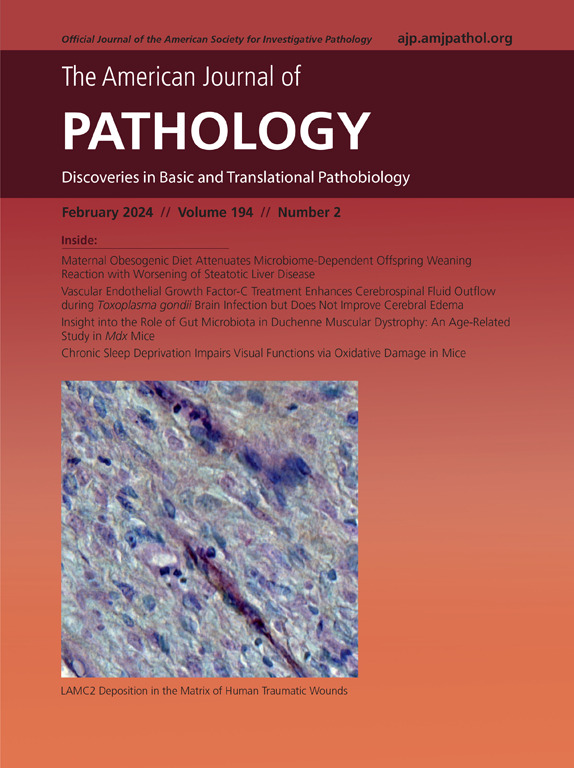Hypoxia Contributes to the Early-Stage Progression of Necrotizing Sialometaplasia
IF 3.6
2区 医学
Q1 PATHOLOGY
引用次数: 0
Abstract
Necrotizing sialometaplasia (NSM) is a nonneoplastic lesion listed in the World Health Organization Classification of Tumours–Head and Neck Tumours. In early NSM lesion, there is infarction and necrosis of the acinar cells, and squamous metaplasia of the salivary ducts occurs as the lesion matures. Differentiation from squamous cell carcinoma and other malignancies is sometimes required clinically and histopathologically. Local hypoxia caused by trauma and vascular compromise is a proposed etiology of NSM. However, the mechanisms underlying the pathogenesis are unclear. This study focused on the early stages of NSM. Histopathologic observations revealed that the region showing acinar necrosis contained myoepithelial cells with reticular arrangement. Hypoxic in vitro experiments using mouse salivary gland organoids revealed that myoepithelial and basal cells were more tolerant to hypoxia than acinar cells. Moreover, the residual myoepithelial cells in NSM and hypoxia-tolerant cells in organoids expressed transforming growth factor-β3 (TGFB3), which plays a critical role in cell proliferation and squamous metaplasia. Organoid experiments have also replicated the process of squamous metaplasia in NSM during hypoxia and the resolution of hypoxia. Thus, this study demonstrated that hypoxia is a possible etiology of NSM based on the results of histopathologic and in vitro experimental observations.
缺氧有助于坏死性唾液化生的早期进展。
坏死性唾液化生(NSM)是世界卫生组织头颈部肿瘤分类中的一种非肿瘤性病变。在早期NSM病变中,腺泡细胞出现梗死和坏死,随着病变成熟,唾液管出现鳞状化生。有时需要从临床和组织病理学上与鳞状细胞癌和其他恶性肿瘤鉴别。创伤和血管受损引起的局部缺氧是NSM的一种病因。然而,其发病机制尚不清楚。这项研究的重点是NSM的早期阶段。组织病理学观察显示腺泡坏死区含有网状排列的肌上皮细胞。小鼠唾液腺类器官体外缺氧实验表明,肌上皮细胞和基底细胞比腺泡细胞对缺氧的耐受性更强。此外,NSM的残余肌上皮细胞和类器官的耐缺氧细胞表达转化生长因子β3 (TGFB3),该因子在细胞增殖和鳞状化生中起关键作用。类器官实验也复制了NSM在缺氧和缺氧消退过程中鳞状化生的过程。因此,根据组织病理学和体外实验观察结果,本研究表明缺氧可能是NSM的病因。
本文章由计算机程序翻译,如有差异,请以英文原文为准。
求助全文
约1分钟内获得全文
求助全文
来源期刊
CiteScore
11.40
自引率
0.00%
发文量
178
审稿时长
30 days
期刊介绍:
The American Journal of Pathology, official journal of the American Society for Investigative Pathology, published by Elsevier, Inc., seeks high-quality original research reports, reviews, and commentaries related to the molecular and cellular basis of disease. The editors will consider basic, translational, and clinical investigations that directly address mechanisms of pathogenesis or provide a foundation for future mechanistic inquiries. Examples of such foundational investigations include data mining, identification of biomarkers, molecular pathology, and discovery research. Foundational studies that incorporate deep learning and artificial intelligence are also welcome. High priority is given to studies of human disease and relevant experimental models using molecular, cellular, and organismal approaches.

 求助内容:
求助内容: 应助结果提醒方式:
应助结果提醒方式:


